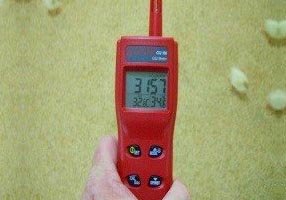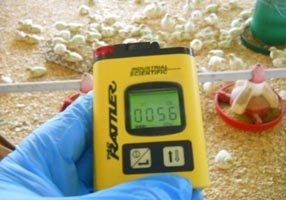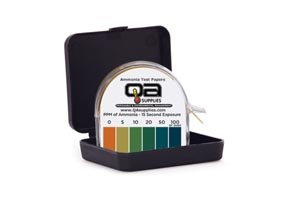Gases
All turkey growers should measure and monitor gases, similar to how they monitor temperature. Keeping tabs on these elements will make a big difference in controlling air quality. Measuring carbon dioxide, carbon monoxide, and ammonia can be done easily, with relatively inexpensive equipment.
Target level
For the most accurate reading, be sure to measure for these elements at bird level.
| Carbon dioxide | < 2,500 ppm |
| Carbon monoxide | < 20 ppm |
| Ammonia | < 25 ppm |
Risks of carbon dioxide
Inactive poults can be a sign of high carbon dioxide in the air. Carbon dioxide is formed through the normal combustion of fuel in brooder stoves as well as the respiration of the birds. Pockets of high carbon dioxide can be caused by a lack of ventilation or from poor air mixing. Carbon dioxide is an important indicator of overall air quality. Keeping the humidity under 60% should result in good C02 levels that are important for the health of the turkeys at any age.


Risks of high carbon monoxide
The risk with high CO levels is that it latches onto hemoglobin and starves the tissues of oxygen, which is directly poisonous to poults and people working in the barns. To manage this issue, it is important to keep the stoves well-maintained. Even if the barn is properly ventilated, a stove putting out high levels of carbon monoxide will cause health issues for the birds as well as barn workers.
Risks of high ammonia
High ammonia levels can be the most detrimental to bird health. After extended exposure to ammonia, the immune system becomes suppressed and the birds are more vulnerable to a number of health risks. Additionally, ammonia destroys cilia in the windpipe and allows more dust to enter the airsacs. It is important to regularly monitor ammonia since you can become accustomed to levels of ammonia and not realize it is increasing.
Keeping your barns properly ventilated will assist with controlling environmental gases.

